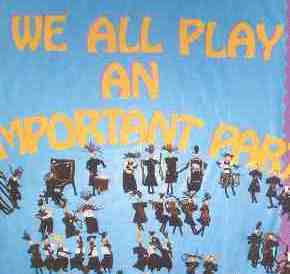The American orchestra provides a dynamic way to approach topics in social studies, language arts, and science: families, neighborhoods, sound production, traits of writing, and more.
Your first stop should be your local orchestra! Check out what they do in the way of education concerts and online resources. Most importantly, you should feel free to let them know that you and your students want to know more about the orchestra. Orchestras want to hear from you about what resources would most benefit you and your students.
The conversations archived in the tags, podcasts, and discussion topics on this website are more appropriate for older students, but primary teachers will find the discussions about education and community engagement an interesting source for ideas and questions to consider with their students.
Further Resources:
K-12 Lesson Plans
There are wonderful resources on the web. For starters, check out these teacher-written lesson plans that engage your students in the study of the orchestra:
Cooperating Families, Cooperating Classrooms
A Symphony Experience in Watercolor
Instrument and Visual Appreciation of Art
Quilting Your Way Through the Orchestra
Musical Instruments and the Science of Sound
Searchable lesson plan libraries with music-integrated lessons that include the orchestra are available:
Keeping Score Education from the San Francisco Symphony
Artsedge from the Kennedy Center
Major symphony orchestras maintain websites with music games and information for children:
DSO Kids by the Dallas Symphony Orchestra
SFSKids by the San Francisco Symphony
NYPhilKids by the New York Philharmonic
BSO Kids by the Boston Symphony Orchestra
Educators at all levels can explore the resources on this site by theme (Community, Creativity, Audience) or by tags. Additional suggestions and resources can be found on the pages for secondary educators and university educators.



